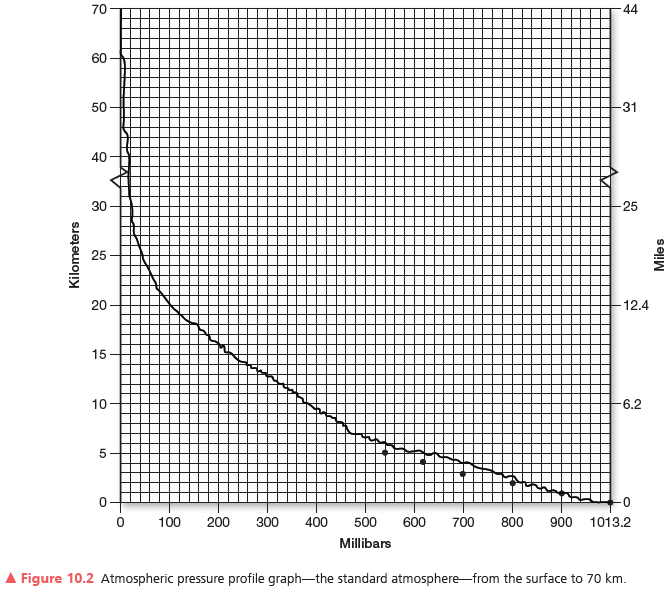Composite cones typically are associated with what type of plate tectonic feature?
A) mid-ocean ridge
B) hot spot
C) continental collision zone
D) subduction zone
D
You might also like to view...
The mixing of the races is known as
A) mestizo B) Columbian Exchange C) ethnic classification D) miscegenation E) syncretism
The information in Table 10.2 allows a determination of the rate of pressure decrease with altitude, which is not at a constant rate. Remember that half of the weight of the total atmosphere occurs below 5500 m (18,000 ft); at that altitude only about half of the total atoms and molecules of atmospheric gases remain to form the mass of the atmosphere. Determine the decrease in pressure between the following altitudes. Express the difference in millibars and inches of mercury. (Conversions are presented earlier in this section.)

1 km interval difference in pressure:
0 and 1 km ______________ mb; ______________ in. Hg
2 and 3 km ______________ mb; ______________ in. Hg
5 and 6 km ______________ mb; ______________ in. Hg
8 and 9 km ______________ mb; ______________ in. Hg
9 and 10 km ______________ mb; ______________ in. Hg
10 km interval difference in pressure:
0 and 10 km ______________ mb; ______________ in. Hg
10 and 20 km ______________ mb; ______________ in. Hg
20 and 30 km ______________ mb; ______________ in. Hg
40 and 50 km ______________ mb; ______________ in. Hg
60 and 70 km ______________ mb; ______________ in. Hg
What percentage of groundwater drawn from aquifers each year is used for irrigation?
A) 21% B) 38% C) 68% D) 11% E) 3%
Winds originate mainly in response to
A. pressure differences in the atmosphere. B. the evaporation of the world's oceans. C. alternating periods of day and night. D. the earth's rotation.